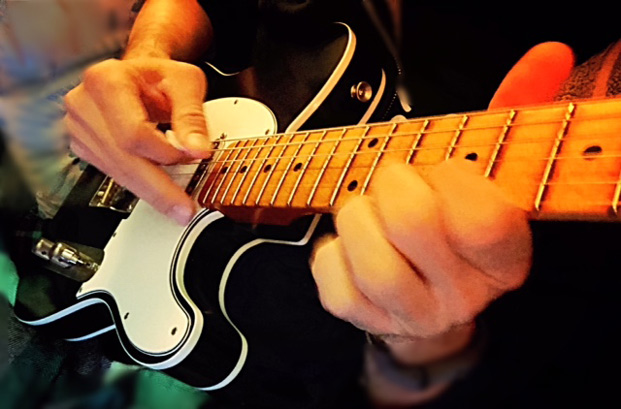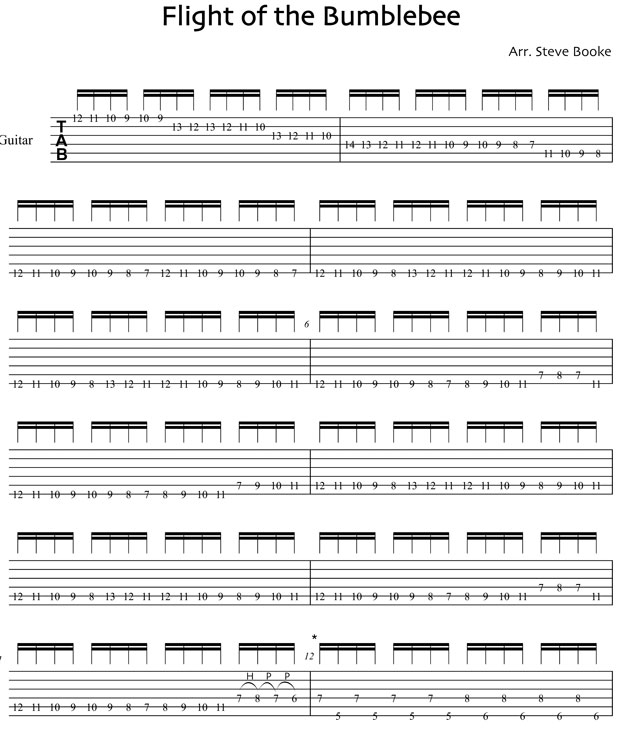Not Just Another "Flight of the Bumblebee" Lesson
Take a unique approach to learning "Flight of the Bumblebee."

"Flight of the Bumblebee" has become a popular piece to play to show off technical prowess on the guitar.
Originally written for violin, there are many different versions you will find for guitar. There is no, single, master version for guitar, since it wasn't written for the instrument. Learning a few different versions would be a good idea. The different approaches will present varying techniques and interpretations.
Most, if not all, of the videos you see of "Flight of the Bumblebee" are performed at lightning-fast speeds. This was the intention of Nikolai Rimsky-Korsakov, the composer of "Flight of the Bumblebee." He wanted to write a piece of music that painted a musical picture of a bee buzzing around, which he very successfully accomplished.
That said, if you cannot play the piece at a fast tempo at this time, you shouldn't be discouraged. Even if you're never able to reach your goal, you will have at least gained something from trying and maybe discovered something new in the process. It’s completely up to you to choose to be discouraged or inspired when trying to accomplish something.
Don’t compare your progress to someone else’s; that's the surest way to fail. I used to compare myself to my peers and it did nothing for me, except wasted a lot of mental energy when I should have just relaxed and gone with the process of progress. Everyone develops and learns at different rates. If you see something you think at the time is unattainable, don’t be discouraged. Be inspired and know that with enough hard work, you will be able to do it or better one day. There's no reason to not be inspired 100 percent of the time!
The best way to approach learning how to play "Flight of the Bumblebee" is to work on memorizing bits of it at a time. A lot of the piece is essentially a main theme with leadups and outs of that theme, chromatically. Work on the main theme separately as a daily exercise, gradually increasing the tempo.
Here's an instance of the main theme:
All the latest guitar news, interviews, lessons, reviews, deals and more, direct to your inbox!

The best fingering for this would be: 4-3-2-1 1-4-3-2 4-3-2-1 1-2-3-4. Compositionally, this is a cool call-and-response phrase.
At bar 12, I threw in some hybrid picking. Obviously, this wasn't in the original, but since it wasn’t written for guitar, almost anything goes, as I said earlier. I put this part in to help my students work on their hybrid picking as well as being able to quickly transition from standard picking to hybrid picking. To get into the hybrid phrase, I threw in a short legato line, which will allow you to set up your right hand for the hybrid picking.

Practice "Flight of the Bumblebee" slowly and memorize it. Eventually you can use it as a warmup “exercise." The best exercises are the most musical ones. If any part of it gives you trouble, isolate that one part and work on it slowly until you get it. You might find yourself working on independent parts of the piece as separate exercises.
The tempo I played it at in the video below is 180 bpm. Do your best to play it at whatever tempo sounds good to you. It could be slower than mine or faster. The most important thing is that it sounds good and you are relaxed while playing it at all times. If you begin to tense up, slow it down. It’s a long piece, so you will have to build up endurance to play it at challenging tempos. Have fun with it and good luck!




Steve Booke is a composer for film and TV from the New York area. His compositions range from orchestral to metal to world styles from every corner of the earth. A graduate of Berklee College of Music, Steve has played guitar for more than 27 years. He has recorded 10 albums of his own and has played on countless others. He plays gigs in the NY area and tours the East Coast with a variety of bands. He has performed with Ben E. King and members of Mahavishnu Orchestra. He endorses D'Addario/Planet Waves, Larrivee Guitars, Levy's Leathers, Peavey, Stylus Pick, Finale PrintMusic, Pigtronix, Tech 21, Toontrack, Graph Tech, Seymour Duncan, Waves, Studio Devil and L.R. Baggs. His music is available on iTunes and Amazon. He can be contacted at info@stevebooke.com. Visit stevebooke.com.
